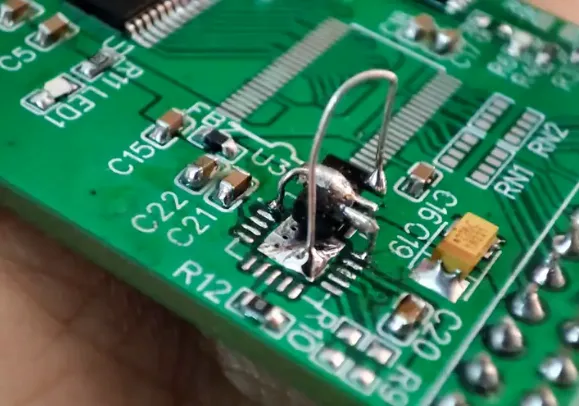Click to receive a free sample coupon~



1. The “Green Code” of Circuit Boards
When you open the back cover of a mobile phone, the iconic green color always catches your eye. This mysterious layer is actually solder mask, with a legendary military origin: in the 1950s, the U.S. military discovered that adding lead chromate to epoxy resin not only provided excellent insulation but also had camouflage properties, enhancing the reliability of field communication equipment. This “military-to-civilian” green formula inadvertently became a visual symbol of the electronics industry.
Modern PCBs have evolved into a “rainbow team”; from the starry blue gradient solder mask introduced by manufacturers like Jiepei PCB to antibacterial coatings specifically for medical devices, color is no longer just decoration—red solder masks can improve laser detection accuracy by 20%, while black substrates can better conceal precision circuits.
2. The Circuit Revolution of the Bronze Age
In 1926, Austrian engineer Charles Ducas completed a “metal magic show” in the laboratory. He drew conductive ink on a slate and used electrolysis to crystallize copper ions on the pattern, creating the world’s first printed circuit board. This process is akin to modern tattoo techniques, giving electronic devices their first “metal nerves”.
Interestingly, early PCBs were related to chocolate production—technical experts found that the etching process used for military radar circuit boards during World War II was improved from the mold engraving techniques of Swiss chocolate factories. This cross-industry fusion increased PCB mass production efficiency by 300 times.
3. The “White Code” on Circuit Boards
Those mysterious white symbols are not random doodles; they are electronic maps drawn with nano-silver ink. In the 1960s, engineers had to hold a magnifying glass and hand-draw these markings like embroidery. Today, companies use laser direct writing technology to engrave clear identifiers within the diameter of a hair, achieving a precision of 0.01mm.
These markings hide the romance of engineers: some have hidden their wives’ initials at the bottom of chips, and NASA has engraved miniature lines from “Star Trek” on the circuit boards of Mars rovers.
4. The Circuit Legend of Moonwalks
The navigation computer of the Apollo 11 lunar module is considered one of the greatest PCB masterpieces in history. This palm-sized circuit board housed 72KB of memory, and its gold-plating process ensured that components remained stable in the extreme conditions of the moon. Remarkably, NASA engineers hand-soldered 5,000 solder points using techniques similar to embroidery, with an error rate that needed to be controlled to one in a million.
Today, aerospace-grade circuit boards have achieved nano-level plating control. The circuit board of the Perseverance rover, launched in 2020, can operate normally in temperature ranges from -120°C to 80°C, and its surface coating can withstand the continuous assault of Martian dust storms.
5. The “Dancing” Circuit Art
Inside foldable smartphones, there are flexible PCBs thinner than paper. These “ballet dancers” of the circuit world use polyimide substrates and can withstand 200,000 bends. Even more astonishing are transparent circuit boards—made with indium tin oxide conductive layers, allowing the hinge area of the Samsung Galaxy Z Flip to achieve “invisible circuits”.
Research at MIT has developed biodegradable circuits that can use silk protein as a substrate, automatically decomposing after completing their tasks in medical implants.
6. The Ultimate Challenge of Circuit Boards
A British engineer created a 28-meter flexible PCB, breaking the notion that “circuits must be rigid.” This “electronic dragon” was manufactured using segmented etching techniques, with a precision error of no more than 0.2mm, providing a neural network-like power system for solar-powered drones. The record for the smallest PCB is held by a blood glucose monitoring chip the size of a grain of salt, with a line width of only 3 micrometers.
As we swipe on our phone screens, we might pause for a moment to pay tribute to the “metal nerve networks” that silently work beneath the green substrates. From the steam age to the smart era, this electronic canvas that carries human wisdom continues to write the legend of silicon-based civilization. Next time you disassemble an old appliance, take a moment to observe closely with a magnifying glass—those elegant copper wire traces hide the genetic code of the entire digital world.

END
Review of Previous Issues
REVIEW

The Hidden Killer When Soldering: How Solder Smoke Harms Our Bodies?

What Are the Obvious Signs That a Hardware Engineer Is Incompetent?

I Don’t Believe You Haven’t Flown! Why Can’t Hardware Design Escape This Difficulty?
You spent · reading
Click below to read the original text and register as a member to receive a free sample coupon!